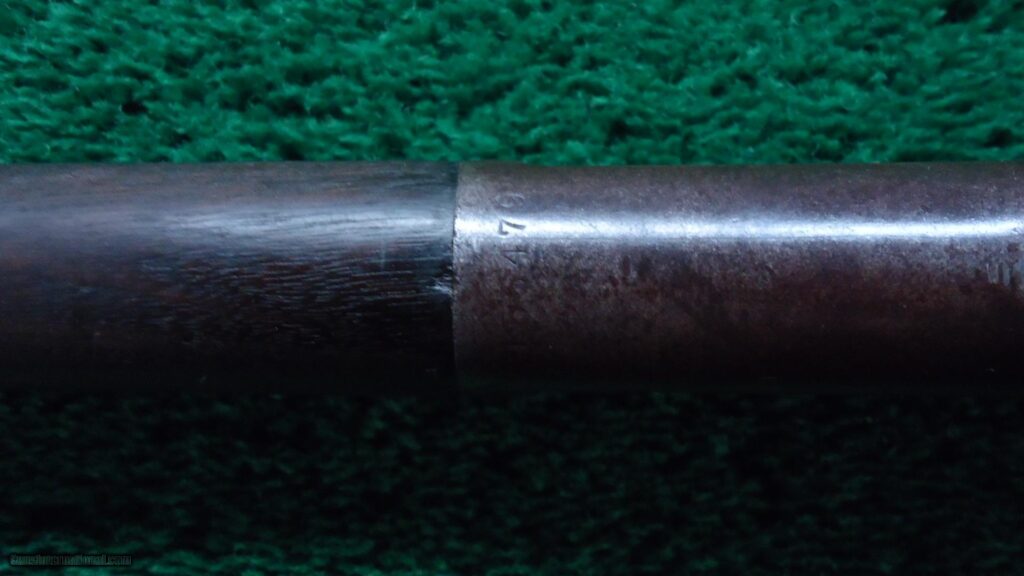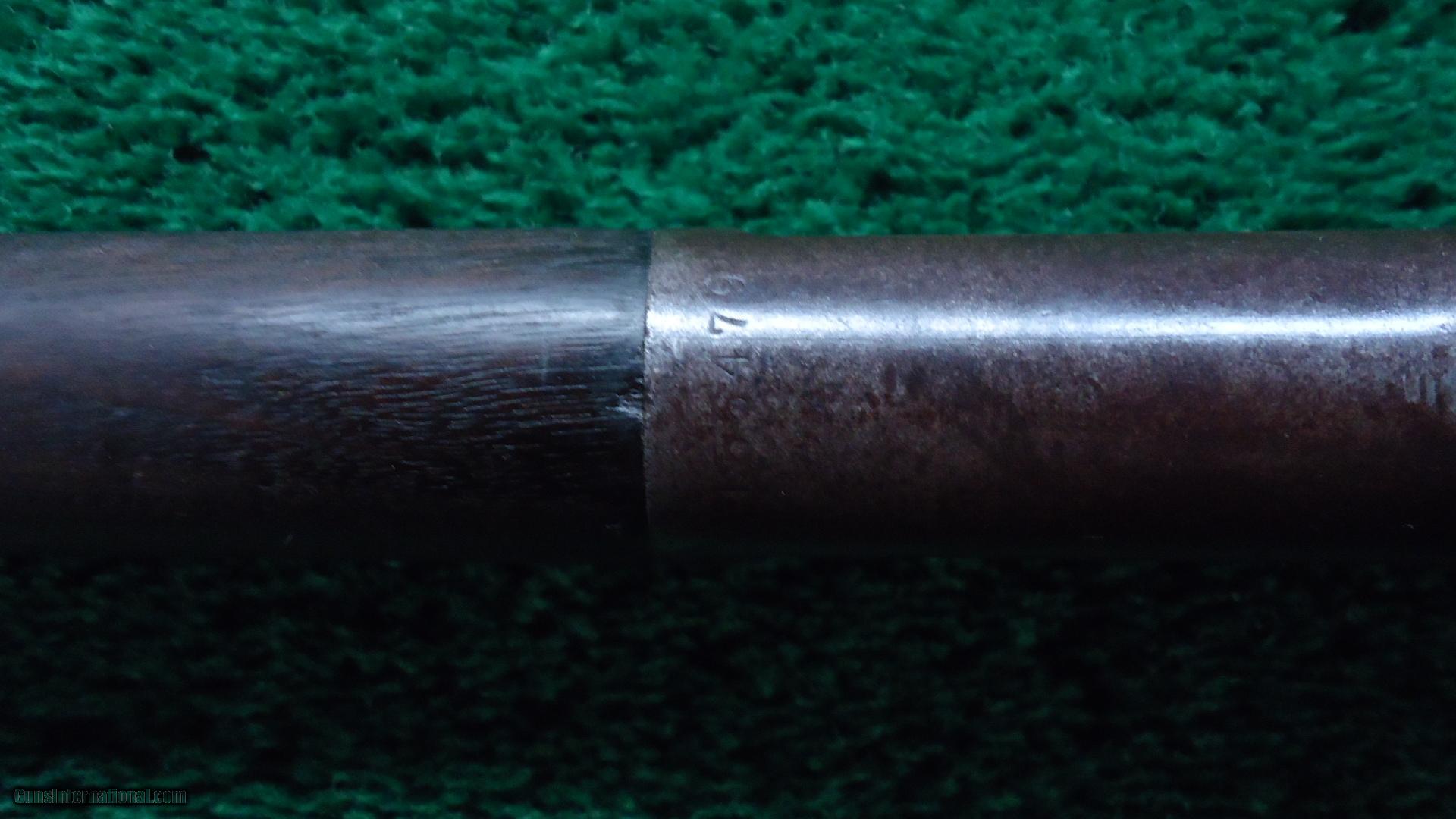
Decoding Your Winchester 1892: A Serial Number Guide
Unlocking the history and value of your Winchester 1892 rifle often begins with a single number: its serial number. This seemingly simple string of digits holds the key to understanding when and where your rifle was manufactured, its potential rarity, and ultimately, its value to collectors and enthusiasts. If you’re looking to delve into the story behind your Winchester 1892, you’ve come to the right place. This comprehensive guide will walk you through everything you need to know about Winchester 1892 serial numbers, from their location and interpretation to their significance in determining the rifle’s history and worth.
We aim to provide a resource that is both informative and accessible, regardless of your prior knowledge. Whether you’re a seasoned collector or a curious newcomer, this guide will equip you with the knowledge to decipher the secrets hidden within your Winchester 1892’s serial number. We’ll explore the intricacies of the serial number system, common variations, and the resources available to further your research. Get ready to embark on a journey through time, uncovering the legacy of your Winchester 1892, one digit at a time.
The Significance of Winchester 1892 Serial Numbers
The Winchester 1892 serial number serves as a unique identifier, assigned to each rifle as it rolled off the assembly line. Unlike modern firearms with detailed manufacturing records easily accessible online, early Winchester production relied heavily on these serial numbers for tracking and identification. These numbers allow historians and collectors to:
- Determine the year of manufacture: This is perhaps the most crucial piece of information gleaned from the serial number. Knowing the year your rifle was made provides valuable context for its potential features and historical significance.
- Identify potential variations: Certain serial number ranges are associated with specific features, barrel lengths, or stock configurations. This can help you determine if your rifle has been modified or if it retains its original factory configuration.
- Estimate rarity and value: Serial numbers, in conjunction with other factors like condition and features, play a significant role in determining the rifle’s market value. Lower serial numbers, especially those in pristine condition, often command higher prices among collectors.
- Trace ownership history (potentially): While not always possible, researching the serial number can sometimes lead to clues about the rifle’s past ownership, particularly if it has been documented in historical records or collector circles.
Understanding the Winchester 1892 serial number system is essential for responsible firearm ownership, historical preservation, and informed collecting. It’s a gateway to appreciating the craftsmanship and legacy of this iconic American rifle.
Locating the Serial Number on Your Winchester 1892
Finding the serial number on your Winchester 1892 is usually straightforward, but it’s essential to know where to look. The most common location is on the underside of the receiver, just behind the lever. Here’s a step-by-step guide:
- Ensure the rifle is unloaded: This is the most important step. Always verify that the chamber is empty and the firearm is safe before handling it.
- Point the rifle in a safe direction: Maintain muzzle awareness throughout the process.
- Locate the receiver: The receiver is the main body of the rifle, housing the action and internal components.
- Look on the underside of the receiver: The serial number is typically stamped into the metal, just behind the lever. You may need a flashlight to see it clearly, especially if the rifle has significant wear or patina.
- If you can’t find it there: In rare cases, the serial number might be located on the lower tang, which is the metal piece that extends down from the receiver and forms part of the trigger guard.
Important Note: Never attempt to disassemble your rifle beyond your level of expertise. If you’re unsure about any step, consult a qualified gunsmith.
Decoding the Serial Number: A Year-by-Year Guide
Winchester maintained a relatively consistent serial number sequence for the Model 1892. However, it’s crucial to consult reliable sources to accurately determine the year of manufacture. Several excellent resources exist, including:
- Winchester Gun Owners Association (WGOA): A reputable organization dedicated to Winchester firearms.
- The Winchester Collector Association (WACA): Another valuable resource for collectors and historians.
- Published serial number lists: Several books and online databases provide detailed serial number ranges and corresponding years of manufacture.
Here’s a general overview of serial number ranges and their approximate years of manufacture. Please note that these are estimates, and consulting a detailed serial number list is always recommended for precise dating:
- 1-15,000 (Approx. 1892-1893): Early production rifles. These are often highly sought after by collectors.
- 15,001-100,000 (Approx. 1893-1896): A significant period of production as the Model 1892 gained popularity.
- 100,001-200,000 (Approx. 1896-1900): Continued production with minor variations.
- 200,001-500,000 (Approx. 1900-1910): High production volume during this era.
- 500,001-750,000 (Approx. 1910-1920): Production continued, with some interruptions due to World War I.
- 750,001-1,004,999 (Approx. 1920-1941): Final production years before World War II halted civilian firearm manufacturing.
Important Considerations:
- Gaps in Production: There were periods of interrupted production, especially during wartime, which can affect the accuracy of serial number dating.
- Overlapping Ranges: Serial number ranges can sometimes overlap between different Winchester models. Always confirm that the serial number corresponds to a Model 1892.
- Variations and Special Orders: Rifles with special features or custom orders may fall outside the typical serial number ranges.
Understanding Winchester 1892 Variations and Features
The Winchester 1892 was produced in a variety of configurations, each with its own unique characteristics and potential value. Understanding these variations is crucial for accurately assessing your rifle’s originality and historical significance. Some of the most common variations include:
- Caliber: The Model 1892 was chambered in several different calibers, including .44-40 Winchester, .38-40 Winchester, .32-20 Winchester, and .25-20 Winchester. The caliber can affect the rifle’s intended use and its value to collectors.
- Barrel Length: Standard barrel lengths were 20 inches (carbine) and 24 inches (rifle), but custom orders could specify different lengths.
- Stock Configuration: Stocks could be straight-grip or pistol-grip, and made of walnut or other hardwoods. The stock’s condition and originality are important factors in determining value.
- Magazine Capacity: The standard magazine capacity was typically 13 rounds, but variations existed.
- Sights: Different sight options were available, including buckhorn sights, ladder sights, and tang-mounted sights.
Special Order Features:
Winchester offered a wide range of special order features, allowing customers to customize their rifles to their specific needs and preferences. These features can significantly increase the rifle’s value and historical interest. Some examples include:
- Engraving: Custom engraving added a personal touch and could range from simple patterns to elaborate scenes.
- Checkering: Checkering on the stock and forearm provided a better grip.
- Special Finishes: Different finishes, such as nickel plating or bluing variations, were available.
- Custom Sights: Customers could request specific sight configurations or aftermarket sights.
Documenting Variations:
Accurately documenting the features and variations of your Winchester 1892 is essential for research and appraisal purposes. Take detailed photographs, note any unique markings or features, and consult with experienced collectors or appraisers to verify your findings.
The Winchester Proof Steel: A Mark of Quality
The term “Winchester Proof Steel” is often associated with Winchester firearms, representing a specific type of steel and a quality assurance process used in the manufacturing of their barrels. While not directly related to the serial number itself, understanding its significance adds to the overall knowledge of your Winchester 1892.
What is Winchester Proof Steel?
Winchester Proof Steel refers to a proprietary steel alloy developed and used by the Winchester Repeating Arms Company for the barrels of their firearms. This steel was known for its strength, durability, and resistance to corrosion, making it a superior material for high-pressure cartridges.
The Proofing Process:
Before leaving the factory, each Winchester barrel underwent a rigorous proofing process. This involved firing an overpressure cartridge through the barrel to test its strength and integrity. If the barrel passed the test, it was stamped with a “Winchester Proof Steel” mark, signifying its quality and safety.
Identifying the Mark:
The Winchester Proof Steel mark typically appears on the barrel of the rifle, often near the receiver. The exact marking can vary depending on the year of manufacture and the specific model. Look for the words “Winchester Proof Steel” or a similar designation.
Significance for Collectors:
The presence of the Winchester Proof Steel mark is a sign of quality and authenticity. It indicates that the barrel is original to the rifle and that it has passed the manufacturer’s stringent testing standards. This can enhance the rifle’s value and desirability among collectors.
The Value of Your Winchester 1892: Factors to Consider
Determining the value of a Winchester 1892 is a complex process that depends on several factors. While the serial number provides a starting point, other considerations play a significant role in the rifle’s overall worth. These include:
- Condition: The overall condition of the rifle is paramount. Rifles in excellent condition, with original finish and minimal wear, command the highest prices.
- Originality: Original parts and features are highly valued. Any modifications or replacements can detract from the rifle’s worth.
- Rarity: Rare variations, calibers, or special order features can significantly increase the rifle’s value.
- Documentation: Original factory letters or other documentation that authenticates the rifle’s history and features can add considerable value.
- Market Demand: The current market demand for Winchester 1892 rifles can fluctuate, influencing prices.
Seeking Professional Appraisal:
For an accurate and reliable appraisal, it’s best to consult with a qualified firearms appraiser who specializes in Winchester rifles. They can assess the rifle’s condition, originality, and rarity, and provide an informed estimate of its value.
Maintaining Your Winchester 1892: Preserving its Legacy
Whether you’re a collector, a history enthusiast, or simply a responsible firearm owner, properly maintaining your Winchester 1892 is essential for preserving its legacy for future generations. Here are some key maintenance tips:
- Regular Cleaning: Clean the rifle regularly to remove dirt, grime, and residue. Use appropriate cleaning solvents and lubricants designed for firearms.
- Proper Storage: Store the rifle in a dry, safe place, away from moisture and extreme temperatures. Consider using a gun safe or cabinet to protect it from theft and damage.
- Professional Inspection: Have the rifle inspected periodically by a qualified gunsmith to ensure it’s in safe working order.
- Avoid Modifications: Unless you’re a skilled gunsmith, avoid making any modifications to the rifle. Originality is highly valued, and alterations can detract from its worth.
- Preserve Documentation: Keep any original documentation, such as factory letters or manuals, in a safe place. These documents can add to the rifle’s historical significance and value.
The Enduring Appeal of the Winchester 1892
The Winchester 1892 remains an iconic symbol of the American West, representing a time of exploration, innovation, and rugged individualism. Its enduring appeal lies not only in its historical significance but also in its craftsmanship, reliability, and timeless design. By understanding the significance of the winchester 1892 serial number and taking proper care of your rifle, you’re contributing to the preservation of this important piece of American history. We hope this guide has provided you with the knowledge and resources you need to unlock the story behind your Winchester 1892 and appreciate its legacy for years to come. Consider sharing your own experiences and insights in the comments below to help others learn more about this remarkable firearm.

